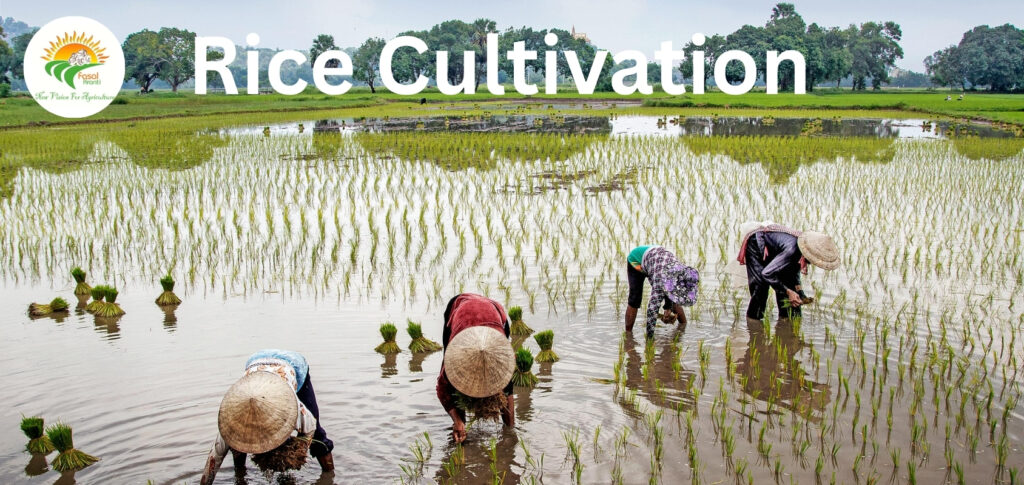
Rice is more than just a staple food in India it’s a cultural icon, an economic powerhouse, and the foundation of food security for over 1.3 billion people. As the world’s second-largest producer (after China) and the top global rice exporter, India’s rice sector plays a pivotal role in both domestic nutrition and international trade markets.
This complete guide explores all aspects of rice cultivation in India from traditional farming methods to cutting-edge technologies, government initiatives to market dynamics, and the challenges facing this crucial agricultural sector.
The Nutritional Powerhouse: Understanding Rice Varieties
India’s diverse agro-climatic zones support cultivation of numerous rice varieties, each with unique characteristics:
1. By Grain Type
- Long-grain varieties (Basmati, Jasmine): Slender grains that remain separate when cooked
- Medium-grain (Sona Masoori, Ponni): Slightly sticky texture, ideal for daily meals
- Short-grain (Joha, Gobindobhog): Sticky consistency perfect for sweets and traditional dishes
2. Specialty Rice Types
- Brown rice: Retains nutrient-rich bran layer
- Red rice: High in antioxidants (e.g., Kerala’s Matta rice)
- Black rice: Premium variety with exceptional nutritional value
- Parboiled rice: Partially boiled before milling for higher nutrition
3. Regional Specialties
- Basmati: The fragrant “King of Rice” from Himalayan foothills
- Joha: Aromatic rice from Assam
- Ambemohar: Maharashtrian variety with mango blossom aroma
The Rice Growing Cycle: Seasons and Conditions
Cropping Seasons
- Kharif (June-November): Main season covering 85% of production
- Rabi (November-April): Limited to irrigated areas
- Summer (April-June): Only in perennial water regions like deltas
Ideal Growing Conditions
- Temperature: 25-35°C during growing season
- Water: 150-300 cm rainfall or equivalent irrigation
- Soil: Clayey loams with good water retention
- Altitude: From below sea level (Kuttanad) to 2000m (Himalayan terraces)
State-wise Production Analysis
| State | Production Share | Key Strengths | Major Challenges | ||
| West Bengal | 15% | Fertile Gangetic delta | Cyclones, flooding | ||
| Uttar Pradesh | 13% | Extensive irrigation | Declining water tables | ||
| Punjab | 11% | High-yield varieties | Soil degradation | ||
| Andhra Pradesh | 10% | Coastal fertility | Salinity intrusion | ||
| Telangana | 8% | New irrigation projects | Erratic monsoons |
Modern Cultivation Techniques Revolutionizing Rice Farming
1. System of Rice Intensification (SRI)
- Water savings: 30-50% less than conventional methods
- Yield increase: 20-50% higher productivity
- Key principles:
- Young seedlings (8-12 days)
- Single seedling per hill
- Wider spacing (25×25 cm)
- Aerated soil conditions
2. Direct Seeded Rice (DSR)
- Advantages:
- 30% water conservation
- 15-20% cost reduction
- Earlier maturation
- Best suited for: Punjab, Haryana, Western UP
3. Precision Farming Technologies
- Laser land leveling: Improves water efficiency by 25%
- Sensor-based irrigation: Optimizes water use
- Drone applications:
- Crop monitoring
- Nutrient mapping
- Targeted spraying
Government Initiatives Boosting Rice Production
1. National Food Security Mission (Rice)
- Components:
- Distribution of high-yield varieties
- Soil health management
- Water conservation techniques
- Impact: 12% productivity increase in target districts
2. PM Krishi Sinchayee Yojana
- Focus: “Per drop more crop”
- Subsidies:
- 55% for small farmers (drip irrigation)
- 45% for others
3. Paramparagat Krishi Vikas Yojana
- Objective: Promote organic rice cultivation
- Support: ₹50,000/ha over 3 years
4. Rice Export Promotion
- Initiatives:
- Quality improvement programs
- Market access expansion
- Achievement: $11 billion rice exports (2022-23)
The Labor Dynamics of Rice Cultivation
Rice remains labor-intensive, requiring:
- Transplanting: 25-30 person-days/acre
- Harvesting: 15-20 person-days/acre
Emerging Trends:
- Rising labor costs (₹400-600/day)
- Growing mechanization (transplanters, harvesters)
- Migrant labor dependence in Northwest India
Water Management Challenges and Solutions
Critical Issues
- Groundwater depletion: 70% of irrigation in Punjab
- Inefficient usage: 3,000-5,000 liters water/kg rice
Conservation Strategies
- Alternate Wetting and Drying (AWD)
- Drip irrigation in water-scarce regions
- Rainwater harvesting ponds
- Community water management
Post-Harvest Management and Value Addition
Key Processes
- Drying: Optimal 14% moisture content
- Storage: Hermetic bags prevent losses
- Milling: Modern mills achieve 68-70% recovery
Value Addition Opportunities
- Fortified rice: For nutrition programs
- Rice bran oil: High-value byproduct
- Ready-to-cook products: Popped rice, flakes
The Export Powerhouse: India’s Global Reach
| Category | Details |
| Total Rice Exports | 22 million tonnes |
| Basmati Rice | $5 billion (Primarily to Middle East) |
| Non-Basmati Rice | $6 billion (Mainly to Africa and Asia) |
Top Markets
| Rank | Country |
| 1 | Saudi Arabia |
| 2 | Iran |
| 3 | Iraq |
| 4 | USA |
| 5 | Bangladesh |
Sustainability Challenges and the Road Ahead
Critical Issues
- Climate change impacts: Erratic monsoons
- Soil health decline: Overuse of chemicals
- Water stress: 54% wells show declining levels
Future Strategies
- Climate-smart varieties: Drought/flood tolerant
- Digital agriculture: AI, IoT solutions
- Regenerative practices: Soil carbon enhancement
- Circular economy: Byproduct utilization
Conclusion
India’s rice sector stands at a crossroads where traditional wisdom must blend with modern technology to ensure sustainable production. While challenges like water scarcity and climate change loom large, opportunities in precision agriculture, value addition and global markets offer promising pathways.